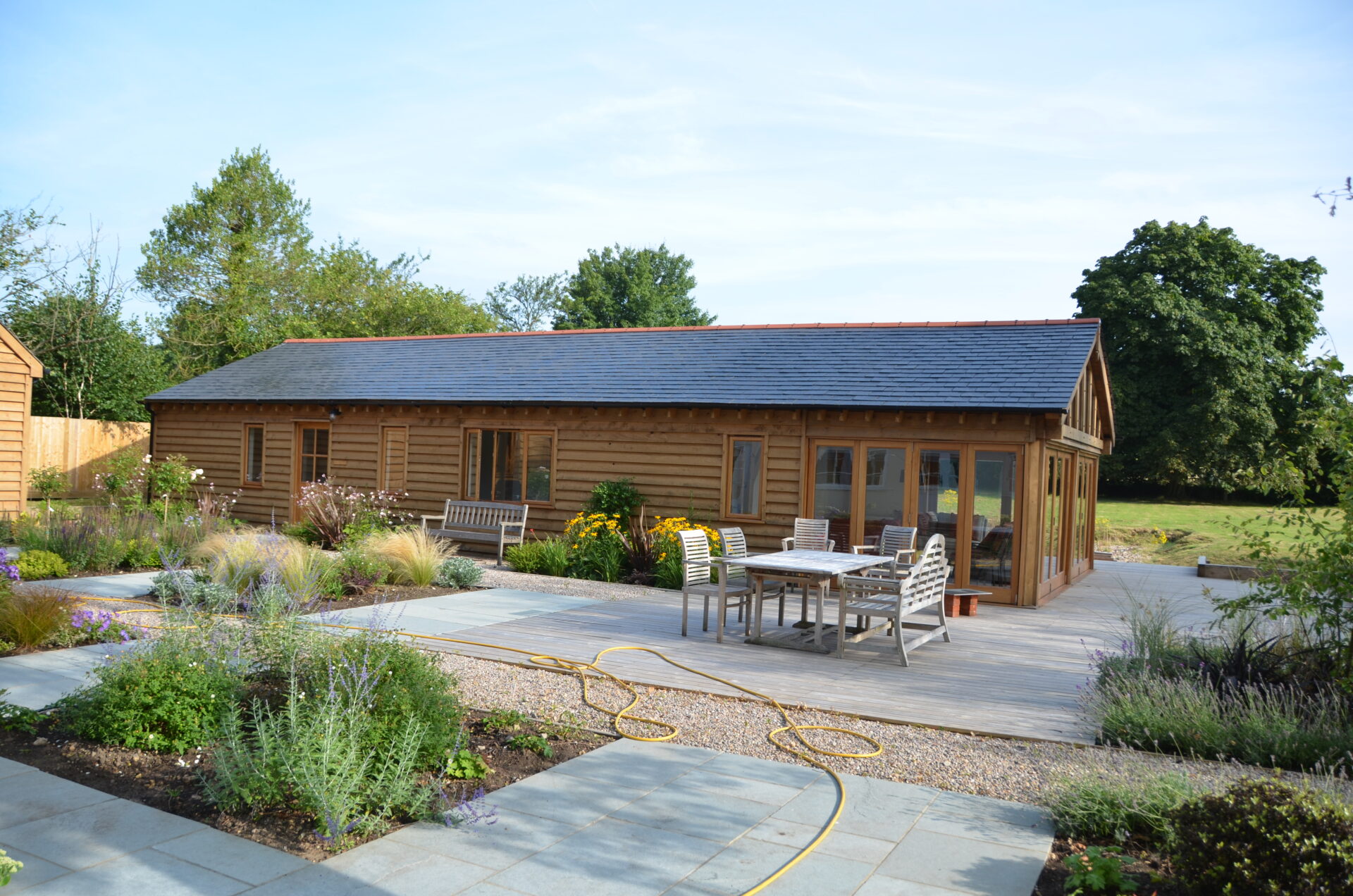
Oak Frame Building Insulation Guide
It would be a shame to not be able to get as much use from your oak framed building or garage as you intended due to bad insulation and temperature regulation.
Luckily, there are many insulation options you can choose from for an oak framed building to suit you. It will be important to check Building Regulations to ensure you comply, and this will depend on the kind of building or extension you are having built.
There are many things to consider with insulation, such as heat loss and condensation risk, therefore it is best to research and even source professional help when deciding what is most appropriate for your building.
When using a green oak frame this is especially important to minimise the shrinking effect that green oak produces over time. At OakCraft, we are more than happy to advise you of the best solutions, so here are some options for you to consider before construction begins on your oak framed building.
Quilt Insulation
This is one of the most cost-effective methods of insulation. It comprises a (usually) 100mm thick quilt which is placed between the rafters and the studwork, making it completely invisible from the outside.
This will, however, need to be combined with a breathable membrane on the roof and walls in order to avoid moisture intrusion as quilt alone will not combat this.
Structural Insulated Panels
These are pieces of insulation bound to oriented strand boards (boards in which layers of wood strands are compressed with adhesives to form a board).
They are cut down to size and placed on roofing or walls that need insulating. The benefit of SIPs is that they can be cut to any size and if purchased from a factory, they are likely to be more uniform in size than any cut on site.
Although they can withstand minor downpours, structural insulated panels are not entirely waterproof, therefore they may not be the best options in areas prone to heavy rainfall.
Plasterboard
Some plasterboard insulation is multi-functional – it can provide insulation, dry lining and vapour control in one. Depending on the brand and type, it can have a Class 0 fire rating, meaning it prevents the spread of flames and limits the amount of heat released. It can be used on internal or external walls.
Breather Membranes
Possibly one of the strongest forms of insulation, certain breather membranes have many sought-after qualities. They are water resistant, wind tight and easy to install. The high-density polyethylene fibres used to create this material provide excellent protection, even able to remain uncovered for up to four months battling the elements and still retaining full performance.
Now you have a better idea about how to insulate an oak framed building, why not let us take the hassle out of the process and contact us today for your free estimate to add a touch of OakCraft to your home.
More Posts

Paws for a Cause: OakCraft’s Charity Challenge for Dogs Trust
At OakCraft, we pride ourselves on crafting bespoke, hand-finished oak buildings, each one tailored precisely to our clients’ individual needs and aspirations. We understand just how important it is to have a space that truly works for you, which is why our team takes the time

Planning Your Oak Building: 8 Essential Considerations
At OakCraft, we pride ourselves on crafting bespoke, hand-finished oak buildings, each one tailored precisely to our clients’ individual needs and aspirations. We understand just how important it is to have a space that truly works for you, which is why our team takes the time